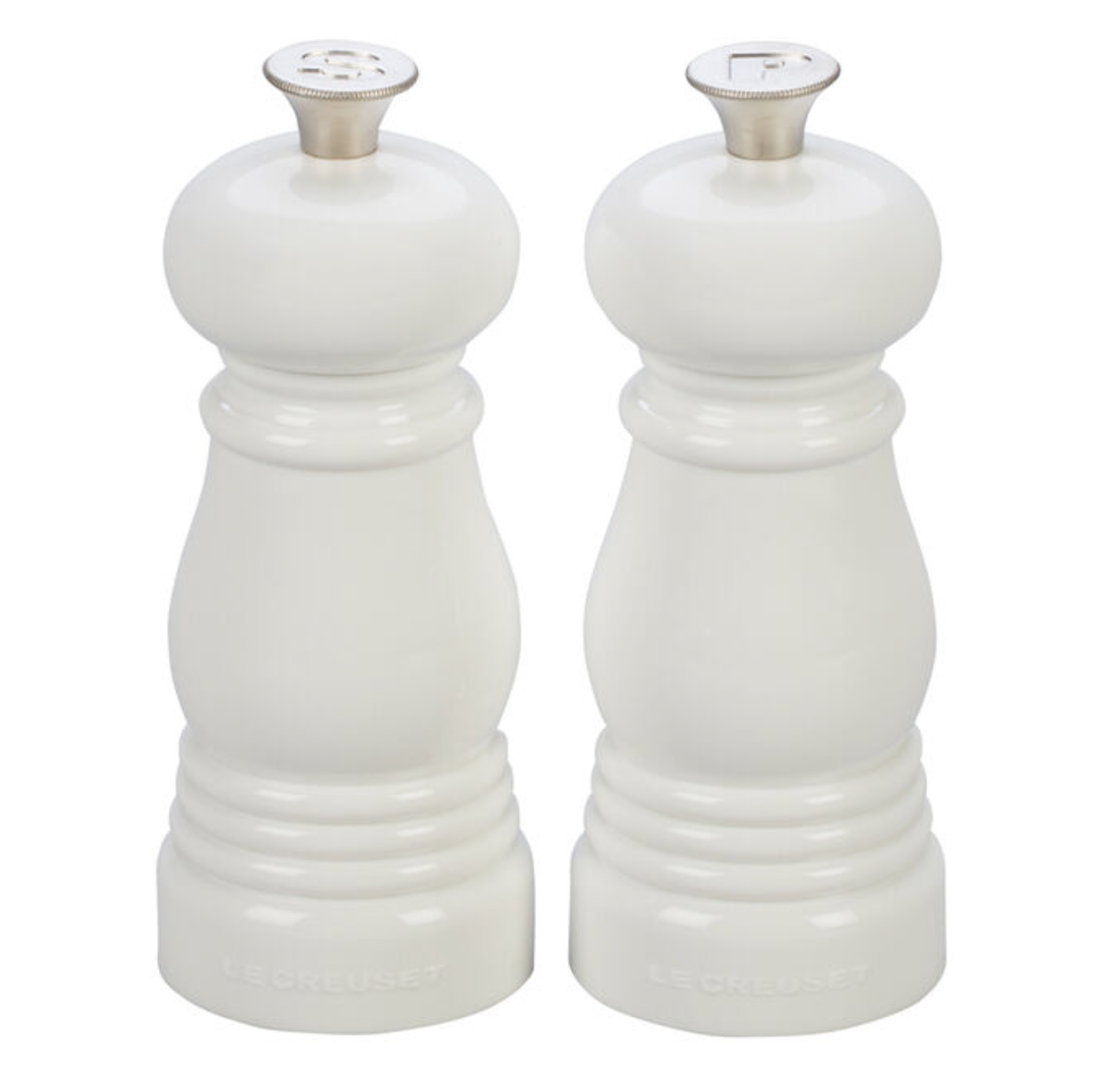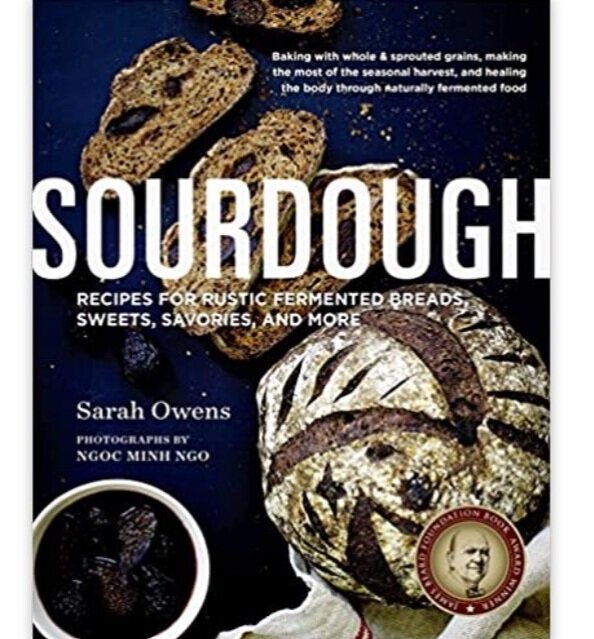SO YOU'RE MAKING SOURDOUGH: HERE ARE 3 RECIPES THAT USE DISCARDED STARTER
WASTE NOTHING, EAT EVERYTHING.
by logan verlaque
I care for it like a baby. I feed it daily, assuring it is well fed. I give it water, making sure it is hydrated. And then I tuck it, making sure it is warm. I think I might even love it.
We sleep.
It grows, and bubbles, and I weigh it to check how it has matured. And then when stomachs start to growl I decide it is time to mix my baby, my sourdough starter, into some flour and water, and turn it into one satiating loaf. Baby to Adult. Caterpillar to Butterfly. Starter to Bread.
There is nothing quite like the joy of baking bread. It can be tedious, even boring at times, while frustrating at others (spoiled starters, burned crusts, crumb-less middles), but the sweet smell of yeasty success is priceless. But as I work my way through various sourdough recipes, and feed and discard my starter daily, I’ve felt a pang of guilt slowly rising in the pit of my stomach (in between slices of rye loaves and sourdough focaccia). How am I throwing out a perfectly good batches of fermented floury water?
So I hit up google and found my discarded starter could finish out its life in places other than my compost bin. As I do not claim to be a baker nor bread connoisseur, I was humbled at my findings. Turns out there are more recipes than I can count on my fingers that use that extra sourdough starter. Below are some of my favorites, so start with them and feel free to let your bread baking mind wander from there.
*Please, if you are not feeling like turning your discard into a recipe, compost it and avoid the trash!
SOURDOUGH PIZZA CRUST
Note: Would be delicious with Athena’s Carrot Top Pesto!
Serves 3-4
THE ingredients
1 1⁄2 cups sourdough starter
2 -3 tablespoons olive oil
1 teaspoon salt
1 1⁄2 cups flour (plus a little more or less to adjust consistency)
method
Preheat oven to 500°F.
Mix starter, 1 tbsp olive oil, salt, and flour (slowly and in increments) together in a mixing bowl until it blends and forms a ball (if you feel like your dough is too sticky, add more flour slowly)
Allow dough to rest for about 30 minutes
Roll out mixture on a lightly floured surface until it fits the size of your pan
Par-bake the crust on a pizza stone or pizza sheet for about 7 minutes, then remove from oven.
Before topping your pizza, brush the top of the crust all over with remaining olive oil, use a pastry brush if you have one
Top as desired and cook until browned and cheese is melted.
Recipe from Food.com
sourdough english muffins
Note: For best sourdough flavor, refrigerate the dough for 24 hours before shaping and cooking the muffins.
Yields 2 dozen large muffins
INGREDIENTS
2 tablespoons (25g) sugar
2 cups (454g) warm water (110°F-115°F)
1 tablespoon active dry yeast or instant yeast
1 cup (227g) sourdough starter, ripe (fed) or discard; ripe will give you a more vigorous rise
7 cups (843g) King Arthur Unbleached All-Purpose Flour
1/2 cup (43g) Baker's Special Dry Milk or nonfat dry milk
1/4 cup (4 tablespoons, 57g) butter, at room temperature
1 tablespoon salt
1/4 teaspoon sour salt (citric acid), optional; for enhanced sour flavor
semolina or cornmeal, for coating
METHOD
Combine all of the dough ingredients, except the cornmeal/semolina, in a large bowl.
Mix and knead — by hand, electric mixer, or bread machine — to form a smooth dough. The dough should be soft and elastic, but not particularly sticky; add additional flour if necessary.
Place the dough in a lightly greased bowl, cover, and set it aside to rise for about 1 1/2 hours, or until it's noticeably puffy. For most pronounced sour flavor, cover the bowl, and immediately place it in the refrigerator (without rising first). Let the dough chill for 24 hours; this will develop its flavor.
Gently deflate the dough, turn it out onto a lightly floured work surface, cover it, and let it sit for a few minutes, to relax the gluten. Divide the dough in half. Working with one piece at a time, roll 1/2" thick, and cut in 3" rounds. Re-roll and cut any remaining scraps. Repeat with the remaining half of dough.
Alternatively, divide the dough into 24 pieces (total). Shape each piece into a round ball, then flatten each ball into a 3" round. For a somewhat more even rise as the muffins cook, flatten each ball slightly larger than 3", and trim edges with a 3" cutter (or trim all around the edge with a pair of scissors). Muffins with cut (rather than flattened) sides will rise more evenly.
Place the rounds, evenly spaced, onto cornmeal- or semolina-sprinkled baking sheets (12 per sheet). Sprinkle them with additional cornmeal or semolina, cover with plastic wrap, and let them rise until light and puffy, about 45 to 60 minutes. If the dough has been refrigerated overnight, the rise time will be about 2 hours.
Carefully transfer the rounds (as many as a time that will fit without crowding) right-side up to a large electric griddle preheated to 350°F, or to an un-greased frying pan that has been preheated over medium-low heat.
Cook the muffins for about 10 to 12 minutes on each side, or until an instant-read thermometer inserted in the center of a muffin registers 190°F. The edges may feel a bit soft; that's OK.
Remove the muffins from the griddle, and cool on a rack. Store tightly wrapped at room temperature for 4 or 5 days; freeze for longer storage.
Recipe and image from King Arthur Flour
golden sourdough waffles
Note: Freeze these for ready to go waffles anytime!
INGREDIENTS
460g (2 cups) buttermilk
110g (1/2 cup) water
126g(1/2 cup or 1 stick) butter, melted and cooled
100g (1/2 cup, stirred down) ripe sourdough starter
250g (2 cups) all-purpose flour, einkorn flour, or a mix of all-purpose and whole wheat
7g (1 1/2 teaspoon) raw sugar
2 eggs
5g (1 teaspoon) sea salt
3g (1/2 teaspoon) baking soda
METHOD
The night before
Add buttermilk and the melted and cooled butter to a large mixing bowl.
Then add your ripe sourdough starter and mix thoroughly (use a whisk and your hands if needed).
Sprinkle the sugar on top and whisk in your flour, a little at a time, until incorporated.
If necessary, use some of the 100g (1/2 cup) reserved water to break up the batter until it resembles a traditional pancake batter. If you have a 100% hydration starter, you probably won’t need to add any water, but if your flour is extra “thirsty” or you have a stiff starter it might be necessary.
Cover the bowl and let sit at room temperature overnight.
In the morning
Warm your whole eggs to room temperature by letting them sit for a few minutes in a bowl of warm water.
Sift the baking soda and salt onto the top of the batter.
Crack the eggs and place the whites in one clean bowl and the yolks in another.
Whisk the egg whites until they form stiff peaks. Lightly scramble up the egg yolks in the second bowl. Pour the yolks into the batter and gently stir through.
Then, using a spatula, fold the eggs whites into the mixture until just incorporated (and no more).
Cook in your smoking hot waffle iron until done to your liking.
Recipe and image from The Perfect Loaf



















